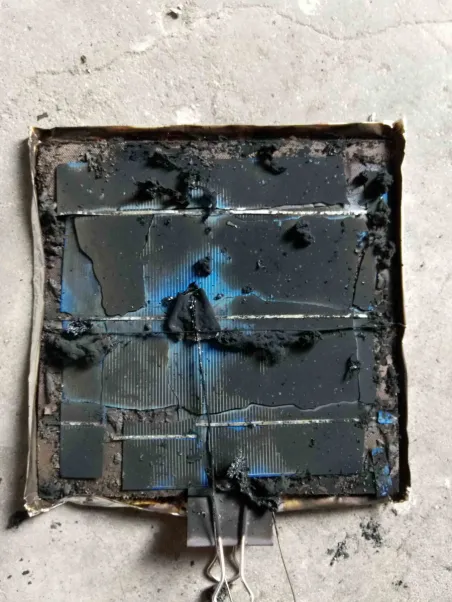Chinese researchers study gas release when combusting PET-laminated thin-film solar panels
- A group of researchers from the Chinese national research institute has examined the way flexible thin-film solar modules with PET-lamination behave when burnt. The findings show that, in the process of combustion, the device releases such toxic emissions as HCN, hydrofluoric acid, SO2 and some VOCs.

Scientists from Chinese SKLFS have examined solar modules, made of thin film, with a PET lamination, having an area of 18 sq cm. The research has been conducted to estimate how toxic the gases produced during the panel combustion are.
The scientific team has studied the burning with the help of a special device used to predict fire behaviour in real time and estimate mass loss, thermal release rate, time of ignition, as well as other parameters. The tool is called a cone calorimeter. But the instrument has some limits, so the only gases the scientists have managed to assess were CO2 and CO.
The panel examined consists of 5 different layers: PCB, poly-Si, PET, and two layers of EVA film. Such modules are applied in portable power devices, power supplies for home and business, PV lawn lamps, and shared bikes. The panel has a life circle of 5 years.
The researchers have found out that EVA has a melting point of about 75°C, while PET melted at about 250°C. The temp growth caused the bottom EVA film melting prior to PET. As a result lots of dense blisters were appearing and collapsing under the layer of PET. When the fire extends over the panel surface, the phase of full combustion starts. After extinguishment of the flame, the combusted sample consists of residue of poly-Si and fiber glass, while PCB, PET and EVA are entirely destroyed by fire.
During the solar device combustion such toxic gases as HCN, hydrofluoric acid, SO2 and some VOCs were emitted.
The scientists state that identical research should be done for solar panels with glass lamination, the production and sales of which is much more scaled.
Also read
- UbiQD Secures Landmark Quantum Dot Deal with First Solar
- Astronergy Invests $53M in Tandem Solar Cell Project
- ARENA Unveils $39M Solar Innovation Funding Round
- CNNP Optoelectronics brings utility-scale perovskite modules out of the lab
- Low-Temperature Sequential Deposition Lifts Inverted Perovskite Solar Cells Efficiency Record
